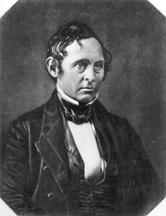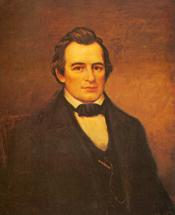This article includes a list of general references, but it lacks sufficient corresponding inline citations .(February 2013) |
| 28th United States Congress | |
|---|---|
27th ← → 29th | |
 United States Capitol (1846) | |
March 4, 1843 – March 4, 1845 | |
| Members | 54 senators 223 representatives 3 non-voting delegates |
| Senate majority | Whig |
| Senate President | Vacant [a] |
| House majority | Democratic |
| House Speaker | John W. Jones (D) |
| Sessions | |
| 1st: December 4, 1843 – June 17, 1844 2nd: December 2, 1844 – March 3, 1845 | |
The 28th United States Congress was a meeting of the legislative branch of the United States federal government, consisting of the United States Senate and the United States House of Representatives. It met in Washington, D.C., from March 4, 1843, to March 4, 1845, during the third and fourth years of John Tyler's presidency. The apportionment of seats in this House of Representatives was based on the 1840 United States census. The Senate had a Whig majority, and the House had a Democratic majority.
Contents
- Major events
- Major legislation
- Treaties
- States admitted
- Party summary
- Senate
- House of Representatives
- Leadership
- Senate 2
- House of Representatives 2
- Members
- Senate 3
- House of Representatives 3
- Changes in membership
- Senate 4
- House of Representatives 4
- Committees
- Senate 5
- House of Representatives 5
- Joint committees
- Employees
- Senate 6
- House of Representatives 6
- See also
- Notes
- References
- External links



